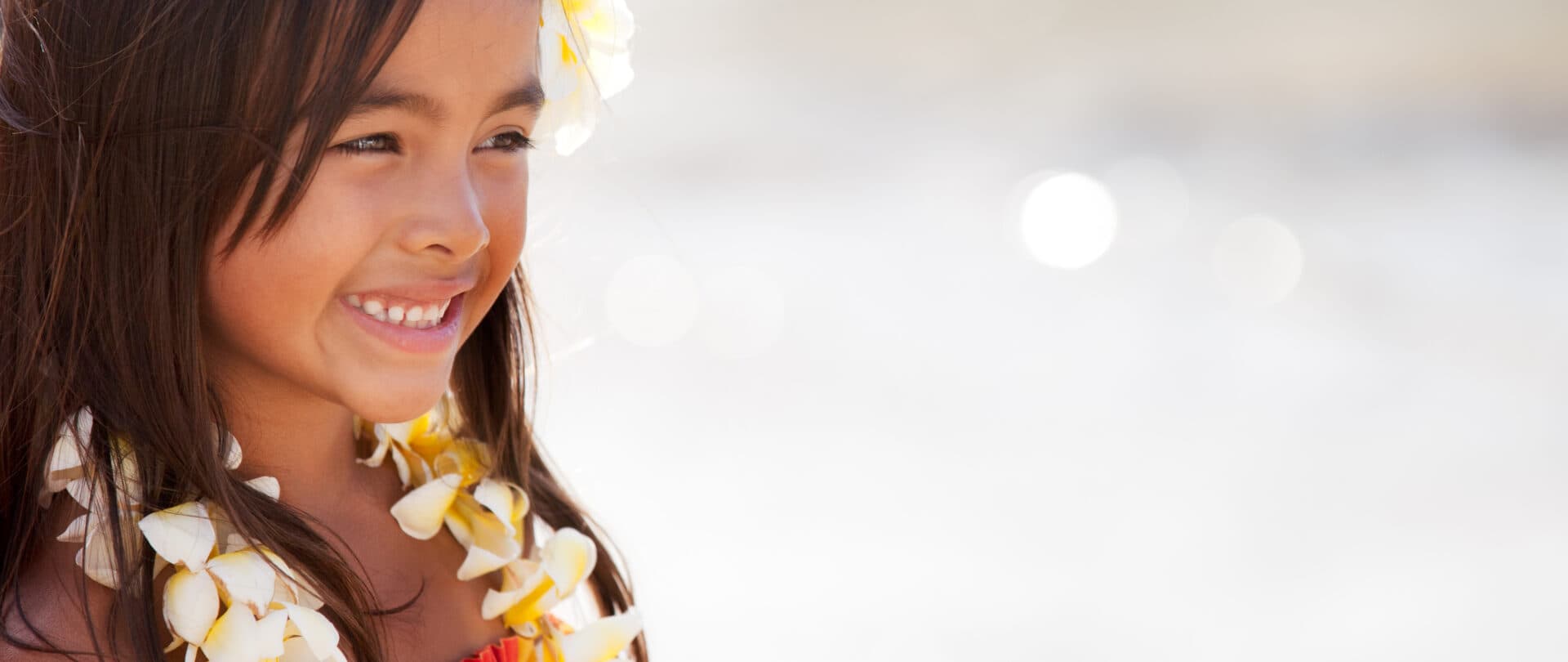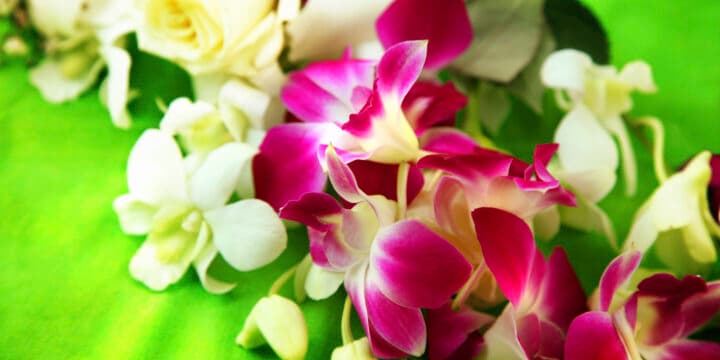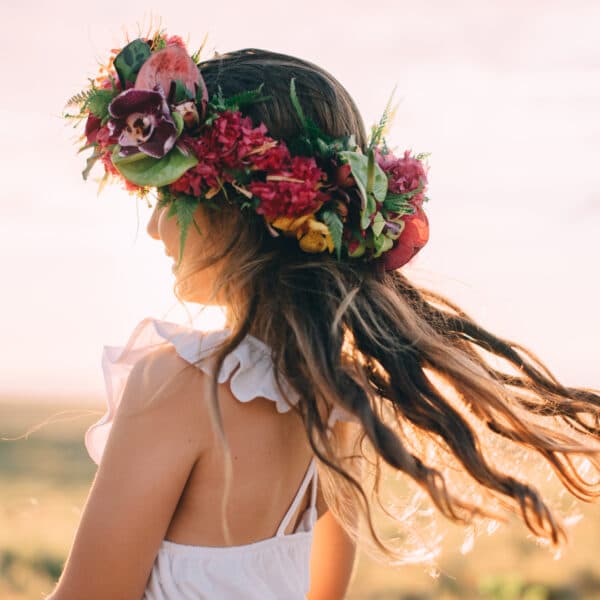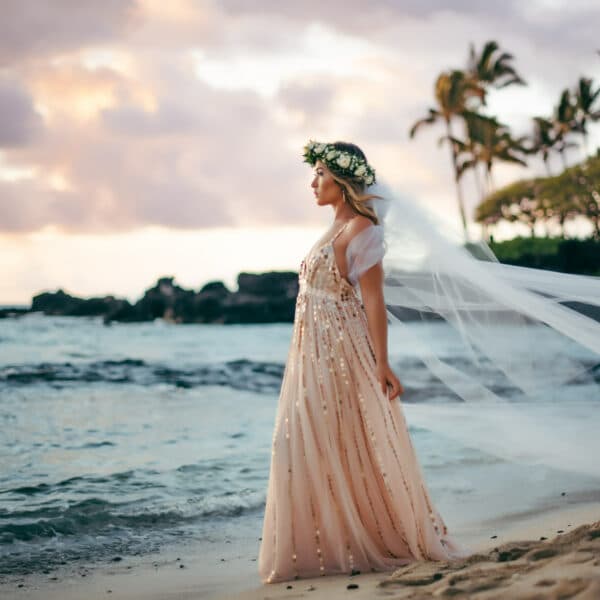
Lei Etiquette and Traditions
What to know when giving and receiving of this cultural tradition
BY Rina Mae Jabolina
If you would like to bestow someone with a lei, there are a few traditions to keep in mind. A lei is customarily presented with a smile and kiss on the cheek, hug, or handshake. According to tradition, you should never give a closed or tied lei to a pregnant woman, because a closed lei is believed to symbolize the umbilical cord tied around a baby’s neck. Also, avoid gifting an ill person a plumeria lei. Plumeria blooms with its varied colors, pleasant fragrance and abundance makes it a popular choice, but it was once considered a “dead man’s lei” because plumeria trees flourished at cemeteries and was often presented at funerals. Though plumeria lei are the perfect lei to welcome and endear visitors or celebrate a friend’s birthday, they are believed to bring bad luck to a person with poor health. Remembering that certain flowers, materials, and designs used in a lei can have significant meanings will save you from accidentally offending others. If in doubt, ask a knowledgeable local or do a little research on the web to help you make the right selection.
Since a lei is an expression of one person’s affection towards an individual, you should always accept a lei. It is considered very disrespectful and rude to refuse one, or even remove a lei in front of the giver. If, for any reason, you must remove a lei in the presence of the giver, do so discretely; and set the lei in a place of honor. For example, when musicians remove a lei to perform, they usually display their lei on their microphone stand.
After a lei has wilted, it should be disposed of in a respectful manner. Never throw a lei in the trash as it is seen as throwing the giver’s affection away. Hawaiians always returned their lei to the land or ocean. Legends say that if you toss your lei into the ocean and it returns to shore, you are destined to return to the islands (just remember to remove the string). In modern times, it is common for people to keep their dried lei, often displaying them in their homes.
Though a lei that is placed on you may only last a short time, the gift of having a lei placed on your shoulders or crown is a precious, lasting memory. So, the next time you’re given a lei, embrace the experience and significance in itself. Look past the aesthetics, and find meaning in each beautiful strung flower, woven petal or braid of leaves, and remember to honor the hands of the artist.

Designated Garland by Island
Perhaps you received one of these treasured lei as a gift on a special occasion or will be greeted with one on your next visit to the islands. Though its beauty and scent will captivate you, remember that the meaning of the lei is of greater significance. You are wearing a living wearable piece of art capable of touching emotions. This truth is often reminded to the people of Hawai‘i every May 1st, which is official Lei Day. Lei Day festivities include hula dancing, Hawaiian music, lei making competitions, and royal courts representing each island. In fact, each island is represented by a designated lei.
The official lei of the Big Island is made with red lehua blossoms, which grow on the native ‘ōhi‘a lehua tree, the first daring tree that sprouts through a new lava field. Resembling a volcanic eruption due to its many vertical streaks of bright red, the lehua fittingly represents the Big Island.
The pink lokelani (Damask rose) lei is Maui’s official lei. The rose is especially loved for its beautiful form and gratifying scent. Lokelani is the only appointed island flower not endemic to Hawaiÿi.
The golden ‘ilima is the official flower of O‘ahu’s lei. ÿIlima is a native Hawaiian plant, and its paper-thin flowers resemble mini hibiscuses. It takes hundreds of blossoms to form a single elegant strand.
Representing the island of Kaua‘i is the mokihana lei. The mokihana is a citrus tree and found only in Kaua‘i on Mount Wai‘ale‘ale. Its bright green berries are strung together to form a long-lasting, fragrant lei that resembles the scent of anise.
The kaunaÿoa lei symbolizes Lāna‘i. The endemic kaunaÿoa plant is a parasitic vine with yellow-orange stems, which grow like webs over the sands of Länaÿi’s beautiful beaches. The thin vines are twisted into a unique lei, and were once worn by ancient Hawaiians when visiting the seashore.
The island of Moloka‘i recognizes the white kukui blossom as the official lei material. Unlike the popular everlasting kukui nut lei mentioned earlier, this lei is made using the small blossoms of the tree as well as the tree’s leaves.
The official lei of Kaho‘olawe is made using hinahina, a plant that once grew profusely out of the sand dunes of Kaho‘olawe’s beaches. The hinahina plant’s unusual silvery gray leaves and white fragrant flowers make hinahina a choice material for lei.
The official lei of Niÿihau is actually made using püpü shells, which are commonly found on the rocky island’s pristine shores. The shells are pierced and then strung on cords to create the Forbidden Island’s official lei. This is the most expensive lei and can easily cost thousands of dollars and is deeply treasured.


